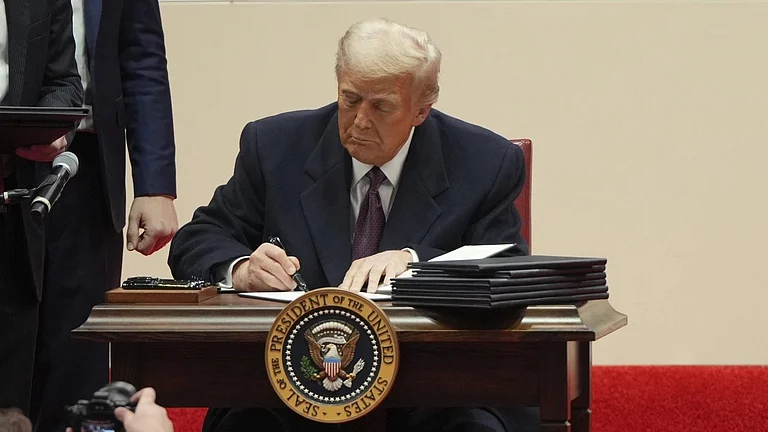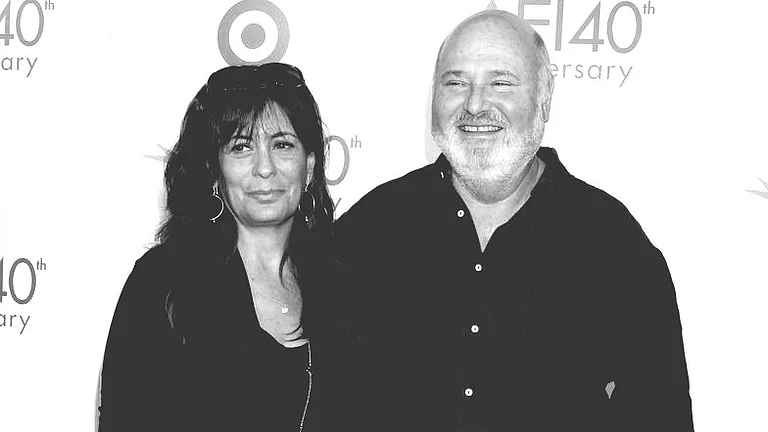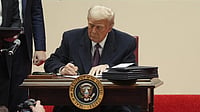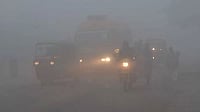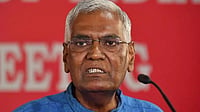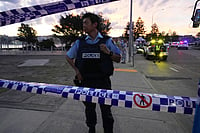ONE can hear the sound soon enough, the staccato gunfire. In the backdrop of which Abdul Ghafoor and his ilk survive in shanties on the outskirts of town. Now plaintive, sometimes angry, almost always resigned, Ghafoor speaks in Urdu, punctuated with Bihari. But the meaning comes across. His story echoes so many others. "For the last 50 years, I have travelled from one place to another. From Bihar to Madras to Calcutta, then to Dhaka and now Karachi. Yes, I have been travelling all my life and at 75, I am far from settled."
According to some estimates, about 650,000 non-Bengalis fled to East Pakistan (now Bangladesh) in 1947; some were relocated by the government itself, like Ghafoor; others were uprooted from their homes by the communal riots that raged in Bengal. These migrants were uprooted again--after the Bangladesh liberation war when the new government refused to recognise this flock as 'Bangladeshi'. Some came back to India, others sought refuge in Pakistan. The government of Bangladesh claims that 260,000 migrants registered for repatriation to Pakistan while 150,000 decided to stay back in Bangladesh. But except for a few thousand, specially government employees and businessmen, the rest were never repatriated. Many came to Pakistan years later and are mostly settled in the Orangi slums in west Karachi. There are still about 230,000 Biharis in UN camps in Bangladesh, who are the 'children of Partition'--the 'stateless people.' Those who migrated to Karachi in 1971-72 and after are neither accepted in Bangladesh nor in Pakistan.
Ghafoor is too old perhaps to care about his status but he is angry: "You have no idea what we have gone through during these migrations. I have seen so many dead bodies, so much blood, so many sacrifices that I sometimes wish you would realise the price we have paid for Independence." With tears rolling down his cheeks, he apologises: "I am sorry I know the people of Karachi have seen enough bloodshed. Now, when I read about people being killed in this city, I feel I am still in a transitional phase. That I may have to migrate someplace else."
Ghafoor's story: he was a foreman in the Railways during Partition. A section of the Muslim League in the interim government took a decision that employees of the Central government, including railways, postal and telegraph services, excise, etc., who had opted for Pakistan and were in service in Bengal, Bihar and eastern parts of UP, would be relocated in East Bengal (Pakistan).
He moved to Saidpur (East Bengal) in August, 1947, and worked as foreman in the Railways for 26 years. The non-Bengali population was concentrated in urban and industrial centres. For a while, there were no problems. Most picked up the local dialect and assimilated with the Bengali society. It was only in the late '60s when the political situation became complicated that tension mounted between locals and migrants. Recalls another victim, Salauddin Khan: "The Bengalis distanced themselves from us. They thought we were hurting their interests." Salauddin migrated to Dacca with his family in 1951 from Hyderabad. "I was eight years old. My father set up a tannery but it soon became difficult to do business there. We moved to Karachi in 1962." But the worst was yet to come. "In Karachi, my father was cheated by his partner and lost everything. My uncles and cousins who stayed behind have done well. One uncle, Inamdar Abdus Salam, became a senior judge at the Madras High Court. Another one, Asif Khan, was elected MP. Though my father always hoped things would improve in Pakistan, they became worse."
They had no choice but to flee Dacca. "After the fall of Dacca, people who claimed to be Pakistanis were in a bewildered state. We were exposed to threats from three directions-from the Mukti Bahini; from Indian army personnel who were rounding up people on the charge of supporting the Pakistan army; and from the new Bangladesh government's agencies which launched a manhunt for suspected collaborators of the Pakistan regime. Many Bengalis who lived in our neighbourhood sheltered us for a while, but then things got so bad that even close friends were forced to move away," says Ghafoor.
"For months my wife, five daughters, four sons and I lived without wages, under extreme feat" Ghafoor and 'stateless' people like him were told to stay at home. Only two per cent of the skilled labour were adjusted later, but below par. It was then that he decided to migrate to (West) Pakistan. He filled the forms for repatriation supplied by the Red Cross in 1972. "There was a long list of people and in 1974 we got the clearance to move to Pakistan."
"I left India in 1947 out of compulsion. I was happy in a new country. After the Bangladesh nightmare, I feel lost. And when people, after living 25 years in Red Cross camps, still claim to be Pakistanis, I have a strange feeling-that the Pakistan I used to dream of is still a dream," Ghafoor whispers. "Nothing has changed, nothing."







